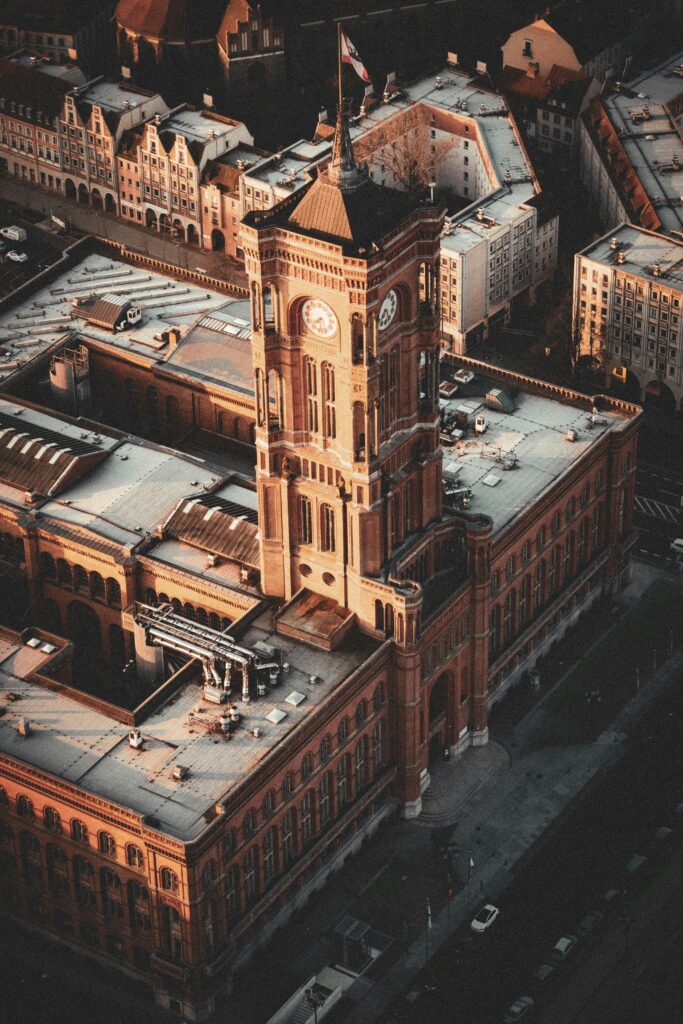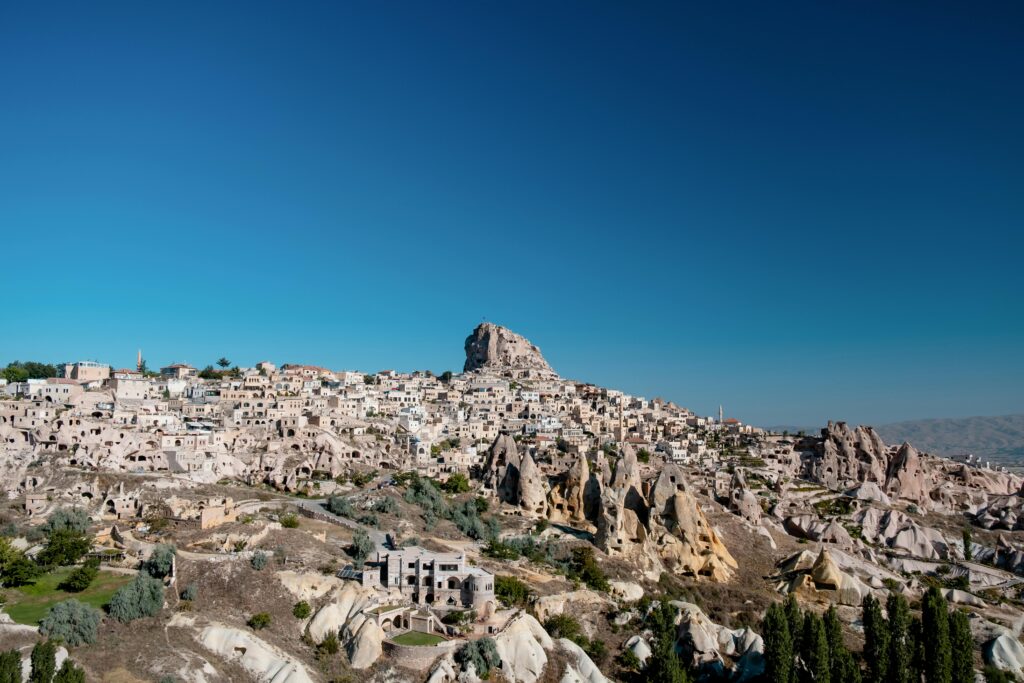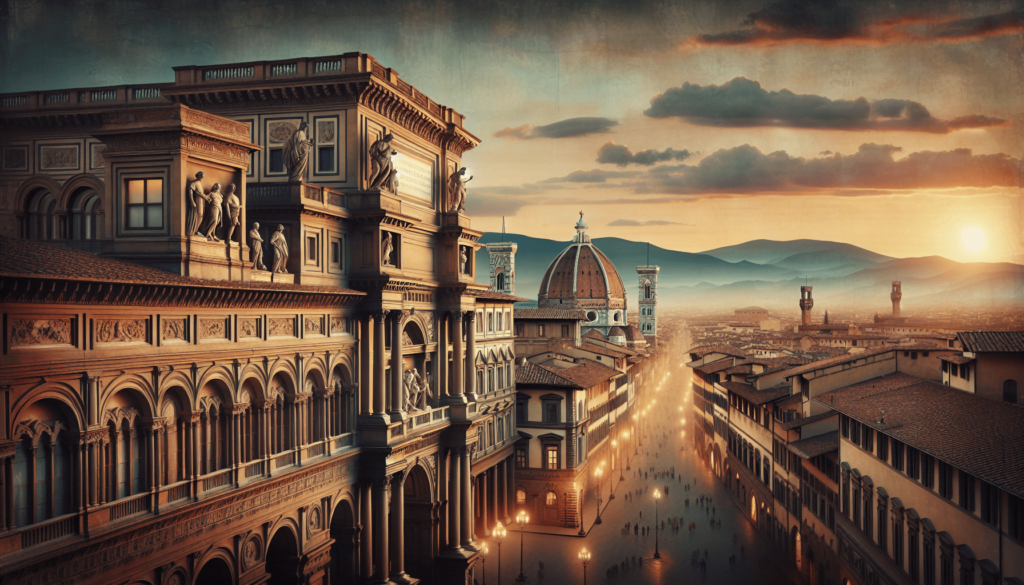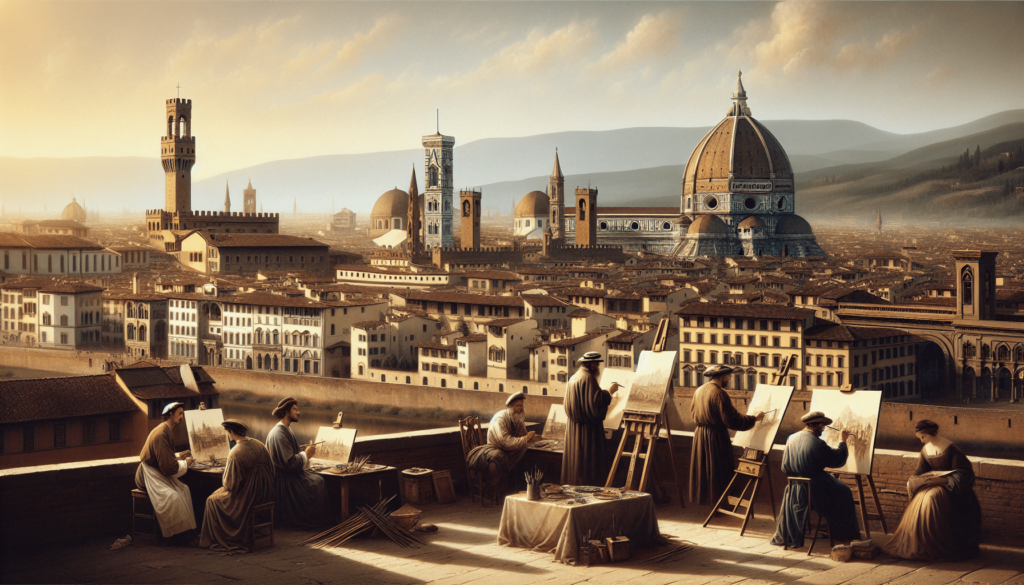Florence, Italy, a city renowned for its rich art and history, offers an immersive experience for those seeking to explore the depths of the Renaissance period. With its stunning architecture and world-famous museums, Florence effortlessly transports visitors back in time to a period of immense cultural growth and creativity.
From Michelangelo’s David to Botticelli’s Birth of Venus, the city’s artistic treasures are displayed with pride, providing a rare opportunity to witness masterpieces up close. Beyond the museums, Florence’s cobbled streets are filled with historic landmarks, such as the iconic Florence Cathedral and the Ponte Vecchio bridge, each holding stories that have shaped the city’s identity over centuries. Whether one is a seasoned art enthusiast or simply appreciates the beauty of history, Florence offers an unforgettable journey into art and culture.
Table of Contents
1. Florence: The Birthplace of the Renaissance
Florence, Italy, is widely regarded as the birthplace of the Renaissance, a period of great cultural and artistic flourishing that spanned the 14th to the 17th centuries. During this time, Florence became a hub of creative activity, attracting artists, thinkers, and scholars from all over Europe. The city’s unique blend of wealth, political power, and artistic patronage created the ideal conditions for the Renaissance movement to take hold.
1.1 The Renaissance Movement in Florence
The Renaissance movement in Florence was characterized by a renewed interest in the classical arts, sciences, and humanism. It marked a departure from the religious dogma that had dominated the Middle Ages, allowing for a more secular and human-centered approach to art and knowledge. Florence, with its prosperous merchant class and influential ruling families like the Medici, became the epicenter of this cultural shift.
1.2 Famous Renaissance Artists from Florence
Florence produced some of the greatest artistic geniuses of the Renaissance. Artists such as Leonardo da Vinci, Michelangelo, Botticelli, and Raphael called Florence their home and left an indelible mark on the city’s artistic legacy. These artists pushed the boundaries of artistic expression, experimenting with techniques and subject matter that would shape the course of Western art history.
1.3 Renaissance Masterpieces in Florence
Visitors to Florence will have the opportunity to marvel at an abundance of Renaissance masterpieces that can be found throughout the city. From the iconic frescoes of the Sistine Chapel in the Vatican to the breathtaking sculptures of Michelangelo’s David and Donatello’s Judith and Holofernes, Florence is a treasure trove of artistic wonders. The city’s churches, museums, and public spaces are adorned with these masterpieces, allowing visitors to immerse themselves in the beauty and innovation of the Renaissance.
1.4 Touring Florence’s Renaissance Architecture
In addition to its renowned artworks, Florence is also renowned for its magnificent Renaissance architecture. Buildings such as the Palazzo Vecchio, the Palazzo Pitti, and the Basilica di Santa Maria del Fiore (Duomo) showcase the architectural genius of the Renaissance period. The harmonious proportions, intricate facades, and ornate details of these structures epitomize the aesthetic ideals of the time. Exploring Florence’s streets and piazzas is like stepping back in time and experiencing the grandeur of the Renaissance firsthand.
2. Florence’s Renowned Art Museums
Florence is home to some of the world’s most renowned art museums, which house an incredible collection of artworks spanning various periods and styles. These museums provide an immersive experience that allows visitors to delve deeper into the rich artistic heritage of Florence.
2.1 The Uffizi Gallery
The Uffizi Gallery is one of the most famous art museums in the world and a must-visit for any art enthusiast. It boasts an extensive collection of Renaissance masterpieces, including Botticelli’s “The Birth of Venus” and Leonardo da Vinci’s “Annunciation.” The museum’s layout is organized chronologically, allowing visitors to trace the progression of art from the Middle Ages to the Baroque period.
2.2 The Accademia Gallery
The Accademia Gallery is home to one of Florence’s most iconic sculptures, Michelangelo’s David. This awe-inspiring masterpiece attracts millions of visitors each year who come to marvel at its sculptural perfection. In addition to David, the museum also houses a collection of Renaissance paintings and sculptures, offering a comprehensive overview of Florentine art.
2.3 The Bargello Museum
The Bargello Museum, located in the historic Palazzo del Bargello, specializes in Renaissance sculpture and decorative arts. Here, visitors can admire works by renowned artists such as Michelangelo, Donatello, and Benvenuto Cellini. The museum’s collection includes intricate bronze sculptures, delicate ceramics, and ornate jewelry, providing a glimpse into the artistic craftsmanship of the Renaissance period.
2.4 The Pitti Palace
The Pitti Palace, once the residence of the powerful Medici family, now houses several museums and galleries, including the Palatine Gallery and the Gallery of Modern Art. The Palatine Gallery is home to an impressive collection of Renaissance paintings, including works by Raphael, Titian, and Caravaggio. The Gallery of Modern Art, on the other hand, showcases Italian and European art from the 18th to the 20th centuries.

3. Exploring Florence’s Historic Palaces and Cathedrals
Florence’s historic palaces and cathedrals serve as tangible reminders of the city’s rich history and its enduring cultural legacy. These architectural wonders transport visitors back in time, offering a glimpse into the opulence and grandeur of Renaissance Florence.
3.1 The Palazzo Vecchio
The Palazzo Vecchio, located in the heart of Florence, was the city’s political and administrative center during the Renaissance. Its impressive tower and fortress-like facade make it an unmistakable landmark in the city. Inside, visitors can explore lavishly decorated rooms, such as the Hall of the Five Hundred, adorned with intricate frescoes and sculptures by renowned artists like Michelangelo and Vasari.
3.2 The Palazzo Pitti
Another prominent palace in Florence is the Palazzo Pitti, which was the residence of the Medici family. Its vast and ornate interiors now house several museums and galleries, including the Palatine Gallery and the Royal Apartments. The palace’s beautiful Boboli Gardens, with their manicured terraces, sculptures, and fountains, offer a peaceful oasis in the heart of the city.
3.3 The Basilica di Santa Maria del Fiore (Duomo)
The Basilica di Santa Maria del Fiore, commonly known as the Duomo, is one of Florence’s most iconic landmarks. Its magnificent dome, designed by Filippo Brunelleschi, is an architectural marvel and a symbol of the city’s artistic prowess. Visitors can climb to the top of the dome for panoramic views of Florence or explore the interior, which houses stunning artworks, including Giorgio Vasari’s frescoes in the Dome.
3.4 The Baptistery of San Giovanni
The Baptistery of San Giovanni, located in front of the Duomo, is a masterpiece of Romanesque architecture. Its distinctive octagonal shape and intricate bronze doors make it an important cultural and religious site in Florence. Inside, visitors can admire the stunning mosaic ceiling and the famous bronze doors created by renowned sculptors such as Lorenzo Ghiberti and Andrea Pisano.
3.5 The Basilica di Santa Croce
The Basilica di Santa Croce is the final resting place of many notable figures from Florence’s history, including Michelangelo, Galileo Galilei, and Machiavelli. The basilica’s exterior is an impressive example of Italian Gothic architecture, while the interior houses numerous chapels adorned with frescoes and sculptures. The adjacent Piazza Santa Croce is a vibrant square where locals and visitors alike gather to soak in the atmosphere and admire the church’s facade.
4. Discovering Florence’s Open-air Art
Beyond its museums and historical buildings, Florence also offers a wealth of open-air art that can be experienced in its public spaces and gardens. These outdoor treasures provide a unique opportunity to encounter art in a more relaxed and natural setting.
4.1 Piazzale Michelangelo
Piazzale Michelangelo offers panoramic views of Florence and is the perfect spot to admire the city’s skyline. In addition to its breathtaking vistas, the square is home to a replica of Michelangelo’s David, serving as a tribute to the artist and a reminder of his enduring legacy. Visitors can also explore the nearby Rose Garden, which boasts a stunning collection of roses and offers another perspective of the city.
4.2 Boboli Gardens
The Boboli Gardens, located behind the Pitti Palace, is a vast Renaissance garden that provides a tranquil escape from the bustling city. Designed in the 16th century, the garden features meticulously landscaped lawns, sculpted hedges, and elegant fountains. It is also home to a collection of classical sculptures, making it a true outdoor museum.
4.3 The Medici Chapels
The Medici Chapels, located within the Basilica di San Lorenzo, showcase the Medici family’s grand mausoleum. These chapels are adorned with magnificent sculptures by Michelangelo, including his famous “Night” and “Day,” which flank the monumental tombs. The Medici Chapel complex also includes the New Sacristy, a serene space designed by Michelangelo to house the Medici family’s precious relics.
4.4 The Loggia dei Lanzi
The Loggia dei Lanzi, an open-air sculpture gallery in the heart of Florence, showcases several important Renaissance sculptures. Visitors can marvel at masterpieces such as Benvenuto Cellini’s “Perseus with the Head of Medusa” and Giambologna’s “Rape of the Sabine Women.” The loggia’s location on the Piazza della Signoria makes it a popular gathering place and a vibrant hub of cultural activity.

5. Preserving Renaissance Artifacts: Florence’s Artisan Workshops and Markets
Florence’s rich artistic heritage is not only celebrated in museums and galleries but also preserved through the dedicated work of local artisans and craftsmen. These skilled individuals continue to uphold traditional techniques and create exquisite pieces of art that pay homage to the Renaissance era.
5.1 Traditional Florentine Leathercraft
Florence has a long-standing tradition of leathercraft, dating back to the Renaissance. Artisan workshops in the city continue to produce fine leather goods, including beautifully crafted bags, belts, and jackets. Visitors can witness the intricate process of leatherworking and even purchase unique pieces to take home as a lasting memento of their time in Florence.
5.2 Florentine Mosaics and Inlays
Florence is renowned for its intricate mosaic and inlay work, which involves the art of combining different materials, such as marble and semi-precious stones, to create stunning designs. The workshops in the Oltrarno neighborhood specialize in this delicate art form, producing exquisite pieces that can be found adorning local churches, palaces, and museums.
5.3 Handmade Paper Production
Florence has been a center of paper production since the 13th century, and this tradition continues to thrive today. Artisans in the city use traditional techniques to create exquisite handmade paper, which can be adorned with marbled patterns or embossed with intricate designs. Visitors can learn about the paper-making process and even try their hand at creating their own paper souvenirs.
5.4 Goldsmithing and Jewelry
Florence has a rich tradition of goldsmithing, with artisans producing intricate jewelry and precious metal objects. The city’s workshops are known for their meticulous attention to detail and exceptional craftsmanship. Visitors can witness the art of goldsmithing firsthand and browse through a wide range of exquisite jewelry, from intricate necklaces to unique engagement rings.
5.5 Exploring the San Lorenzo Market and Stalls
The San Lorenzo Market, located near the Basilica di San Lorenzo, is a vibrant hub of activity where visitors can immerse themselves in the city’s bustling market culture. Here, they can browse through stalls selling a variety of artisanal products, including leather goods, ceramics, clothing, and souvenirs. The market offers a unique opportunity to interact with local vendors and discover hidden gems among the countless stalls.
6. Florence’s Historical Bridges and River Arno
Florence’s picturesque River Arno is spanned by several historic bridges, each with its own unique charm and architectural significance. These bridges, some dating back to medieval times, provide stunning views of the city and offer a glimpse into Florence’s past.
6.1 The Ponte Vecchio
The Ponte Vecchio is perhaps the most iconic bridge in Florence. Known for its distinctive medieval architecture and its multitude of jewelry shops, the bridge exudes a romantic charm that is hard to resist. Walking across the Ponte Vecchio, with its views of the river and the city’s skyline, is a memorable experience that captures the essence of Florence.
6.2 The Ponte Santa Trinita
The Ponte Santa Trinita, located just upstream from the Ponte Vecchio, is another architectural gem that offers breathtaking views of the River Arno. The bridge’s elegant design, characterized by three elliptical arches, is a testament to the artistic prowess of the Renaissance period. Crossing the Ponte Santa Trinita allows visitors to appreciate Florence’s historic beauty from a different perspective.
6.3 The Ponte alle Grazie
The Ponte alle Grazie, located downstream from the Ponte Vecchio, is a lesser-known bridge that offers a tranquil escape from the bustling crowds. This bridge provides unobstructed views of the River Arno and the city’s skyline. It is an ideal spot for a leisurely stroll or for capturing stunning photographs of Florence’s natural and architectural wonders.
6.4 The Ponte alla Carraia
The Ponte alla Carraia, located near the San Frediano neighborhood, is another historic bridge in Florence. Dating back to the 17th century, it is characterized by its double-arched design and its imposing stone structure. The bridge offers a peaceful setting for enjoying the views of the River Arno and the surrounding cityscape.
6.5 The Ponte Amerigo Vespucci
The Ponte Amerigo Vespucci, named after the renowned Florentine explorer, is a modern bridge that spans the River Arno. This bridge, constructed in the 1950s, provides a vital connection between Florence’s historical center and the Oltrarno district. Its sleek design and contemporary architecture offer a contrasting perspective to the city’s ancient bridges, showcasing the ongoing evolution of Florence’s infrastructure.

7. The Medici Influence on Florence’s Art and History
The Medici family played a pivotal role in shaping Florence’s art and history during the Renaissance. As influential patrons of the arts, they fostered a climate of creativity and provided support to many renowned artists and thinkers of the time. Their influence can still be felt throughout the city, from their opulent palaces to the masterpieces that adorn Florence’s churches and museums.
7.1 The Medici Family Legacy
The Medici family rose to prominence in the 15th century and went on to become one of the most powerful dynasties in Europe. Their wealth, acquired through banking and trade, enabled them to exert significant political and cultural influence in Florence and beyond. The family’s legacy is marked by their patronage of the arts, their political alliances, and their impact on the city’s development.
7.2 Medici Palaces and Villas
The Medici family commissioned the construction of magnificent palaces and villas throughout Florence and its surrounding countryside. These architectural marvels, such as the Palazzo Medici Riccardi, the Palazzo Pitti, and the Villa di Castello, served as the family’s residences and as centers of artistic and intellectual activity. Today, these structures offer visitors a glimpse into the opulent lifestyle of the Medici family and the grandeur of the Renaissance.
7.3 Medici Patronage and Art Collection
The Medici were renowned for their patronage of the arts, supporting artists, musicians, and scholars who contributed to the flourishing of the Renaissance movement. Through their patronage, the Medici amassed an impressive art collection that included works by Leonardo da Vinci, Michelangelo, Botticelli, and many more. Some of these artworks can still be seen in Florence’s museums and galleries today, offering a testament to the Medici’s enduring influence.
7.4 Visiting the Medici Chapels
The Medici Chapels, located within the Basilica di San Lorenzo, are a testament to the family’s religious devotion and their desire to create a grand mausoleum. These chapels, adorned with exquisite sculptures and frescoes, are the final resting place of many Medici family members. Visitors can explore the chapels and witness the artistic virtuosity of Michelangelo, whose monumental sculptures dominate the space.
7.5 Discovering the Medici-Riccardi Palace
The Medici-Riccardi Palace, originally built for Cosimo de’ Medici, showcases the opulence and artistic flair of the Medici family. Its courtyard, designed by Michelangelo, is a marvel of Renaissance architecture. Inside, visitors can explore ornate halls, frescoed ceilings, and a beautiful private chapel. The palace is also home to the Medici family’s private art collection, offering a unique opportunity to admire artworks in their original setting.
8. Florence’s Literary and Philosophical History
Beyond its artistic achievements, Florence also holds a significant place in literary and philosophical history. The city served as a hub of intellectual activity during the Renaissance, attracting scholars, philosophers, and writers who made profound contributions to the fields of literature, philosophy, and language.
8.1 Dante Alighieri and the Divine Comedy
Florence’s literary legacy is epitomized by Dante Alighieri, one of Italy’s greatest writers and the author of the Divine Comedy. This epic poem, written in the early 14th century, describes Dante’s journey through Hell, Purgatory, and Heaven. Dante’s work laid the foundation for the Italian language and cemented Florence’s position as a cultural center during the Renaissance.
8.2 Renaissance Humanism and Machiavelli
The Renaissance period saw the rise of humanism, a philosophy that emphasized the importance of human potential and the study of classical literature and art. Florence played a crucial role in this intellectual revolution, with scholars like Niccolò Machiavelli contributing groundbreaking works. Machiavelli’s “The Prince,” a political treatise that explores the acquisition and maintenance of political power, is considered a seminal work in political philosophy.
8.3 Petrarch and the Birth of the Italian Language
Francesco Petrarca, known as Petrarch, was another influential figure in Italian literature and a pioneer of the Renaissance humanist movement. He is best known for his sonnets, written in the vernacular Italian language, which had a profound impact on the development of Italian literature and the birth of the Italian language. Petrarch’s poetic legacy continues to inspire writers and readers alike.
8.4 Exploring Florence’s Literary Landmarks
Visitors to Florence can immerse themselves in the city’s literary heritage by exploring its numerous landmarks and museums dedicated to literature and language. The Casa di Dante, a museum dedicated to the life and works of Dante Alighieri, offers a comprehensive insight into the poet’s life and his enduring impact on Italian culture. The National Central Library, known as the Biblioteca Nazionale Centrale, houses a vast collection of literary treasures, including ancient manuscripts and rare books.

9. Classical Music and Opera in Florence
Florence has a rich classical music tradition, and the city boasts a vibrant music scene that attracts both renowned musicians and avid music lovers. From opera houses to concert halls, Florence offers a wide range of opportunities to experience the beauty of classical music in an authentic and historically significant setting.
9.1 The Teatro del Maggio Musicale Fiorentino
The Teatro del Maggio Musicale Fiorentino is Florence’s premier opera house, hosting world-class opera productions and concerts. Founded in 1933, it has played a pivotal role in promoting Italian opera and nurturing emerging talent. The theater’s elegant interior, with its sumptuous red velvet curtains and ornate boxes, provides a fitting backdrop for unforgettable performances.
9.2 The Orchestra della Toscana
The Orchestra della Toscana, based in Florence, is renowned for its dedication to performing classical and symphonic repertoire. The orchestra attracts top-tier musicians from around the world and regularly collaborates with acclaimed conductors and soloists. Their performances, held in venues such as the Teatro Verdi and the Teatro della Pergola, offer a chance to experience the sublime beauty of classical music in a city that has long been a cultural epicenter.
9.3 Florence’s Opera Houses
In addition to the Teatro del Maggio Musicale Fiorentino, Florence is home to several other opera houses, each offering its own unique charm. The Teatro della Pergola, one of the oldest opera houses in Italy, showcases a diverse range of opera, ballet, and theater performances. The Teatro Verdi, located in the heart of the city, is another renowned venue that hosts opera productions and concerts throughout the year.
9.4 Musicians and Composers from Florence
Florence has been a breeding ground for musical talent throughout history, producing esteemed musicians and composers. Prominent figures such as Giuseppe Verdi, the renowned Italian opera composer, Renato Salvatori, the celebrated tenor, and Lorenzo di Medici, the influential patron of the arts, have all left an indelible mark on the city’s musical legacy. Their contributions serve as a testament to Florence’s enduring influence on the world of classical music.
10. Celebrating Florence’s Historical Events and Festivals
Florence is a city that loves to celebrate its rich history and cultural heritage through a variety of festivals and events. These lively celebrations provide visitors with a unique opportunity to experience the local traditions and customs that have been passed down through generations.
10.1 Calcio Storico (Historical Football)
Calcio Storico, also known as historical football, is a traditional sport that originated in Florence during the 16th century. This unique form of football combines elements of soccer, rugby, and wrestling and is played by teams representing the city’s four historic districts. The annual tournament takes place in Piazza Santa Croce and draws large crowds who come to witness the fierce competition and immerse themselves in this centuries-old tradition.
10.2 Easter Celebrations
Easter holds great significance in Florence, and the city comes alive with a series of religious processions and events during Holy Week. One of the most notable ceremonies is the “Scoppio del Carro” (Explosion of the Cart), which takes place in front of the Duomo. This ancient tradition involves lighting a carefully prepared cart filled with fireworks to ensure a prosperous year ahead. The spectacle attracts locals and visitors who gather to witness the fiery display and partake in the festive atmosphere.
10.3 Festa della Rificolona (Festival of the Paper Lanterns)
The Festa della Rificolona, celebrated on September 7th, is a charming festival that harks back to Florence’s agricultural past. Participants carry colorful paper lanterns through the streets, lighting up the night sky with their vibrant glow. The festival’s origins can be traced back to the tradition of farmers bringing their produce to the city to sell, using lanterns to guide their way. Today, the Festa della Rificolona offers a magical experience for visitors of all ages.
10.4 The Feast of Saint John the Baptist
The Feast of Saint John the Baptist, the patron saint of Florence, is celebrated on June 24th each year. The city comes alive with music, parades, and a spectacular fireworks display that illuminates the night sky. The festival pays homage to the city’s patron saint and showcases the vibrant spirit and cultural heritage of Florence.
10.5 Exploring Florence’s Traditional Festivals
Florence hosts a multitude of traditional festivals throughout the year, each offering a unique insight into the city’s cultural traditions. The Historic Football Festival, the Iris Festival at the Piazzale Michelangelo, and the San Miniato Truffle Fair are just a few examples of the many events that bring the streets of Florence to life. These festivals provide a wonderful opportunity to immerse oneself in the local culture, taste traditional delicacies, and witness captivating performances.

Exploring Florence: A Comprehensive Guide to the City’s Art, History, and Culture
